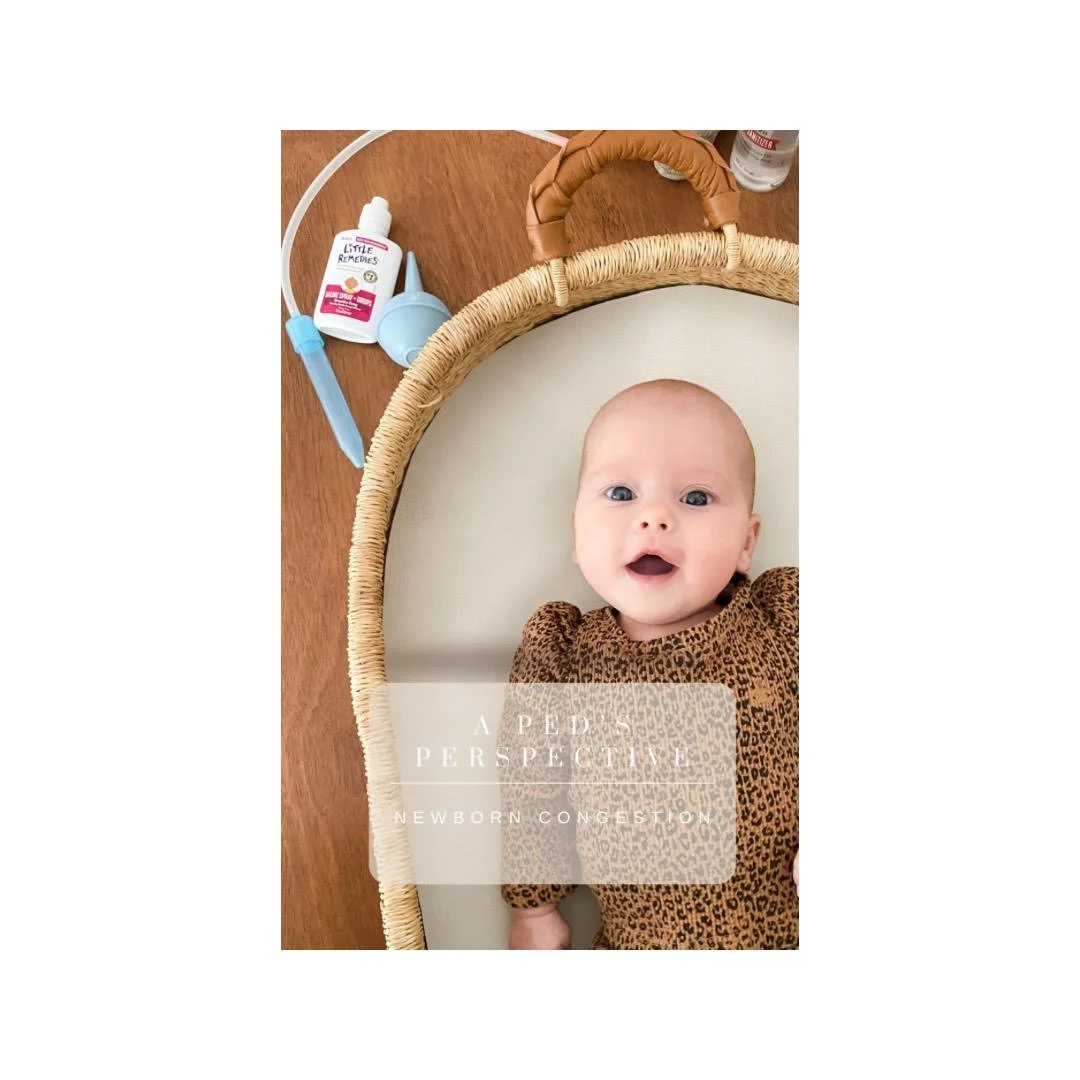A Ped’s Perspective: Newborn Congestion
Have you found your newborn to have very noisy breathing?
Nasal congestion is a very common finding in babies, especially newborns. They are being exposed to so much new, and it is actually a defense mechanism to create mucous to try to capture the germs, dust, allergens, etc. Sneezing is also very common as a way for them to expel any captured particles. Their little bodies are smart.
Most of the time, nasal congestion is a normal newborn finding.
Although nasal congestion is a normal newborn finding, it can still be bothersome and make it difficult for them to breathe. Babies are obligate nose breathers, meaning they only know how to breathe through their little noses. Management of the nasal congestion can help babies breathe better and subsequently feed and sleep better too (meaning everyone is doing better, am I right?)
What to do to help congestion?
Saline drops: help loosen any dry mucous causing congestion, making it easier to remove naturally with sneezing or with nasal suctioning.
Nasal suctioning: i love the bulb syringe from the hospital, or the nose frida is a great suctioning device as well.
Steamy showers: standing in the bathroom with the steamy shower going is a great natural way to loosen any dry mucous with the humidified air. A cool mist humidifier can be used, but ensure that the device is cleaned properly because they can often harbor mold.
When to know if it is more than just normal newborn congestion?
Fever >100.4
Increased fussiness (irritability)
Decreased appetite (drinking less formula or breastmilk compared to normal)
Coughing
Significant runny nose
It is possible for babies to develop cold viruses as well, this is even more common if they have older siblings or are in daycare. Keep an eye on symptoms, and call your pediatrician for advice if symptoms start worsening/progressing. This is especially important if your baby is less than 2 months old and develops a fever >100.4; medical evaluation would be promptly recommended.
Tips for nasal suctioning:
Always use saline drops first
Occlude the opposite nare to help increase suction
Swaddling tightly is helpful, especially if suctioning by yourself
Positioning yourself above their head allows you to use your two forearms to keep them from moving their head around while suctioning
Keep in mind that they are not going to like nasal suctioning, and that’s okay! Practice allows you to suction effectively, but as quickly as possible. They may not like it while suctioning, but they will be happier when they can breathe easier. Promise.
Kelly, MSN, APRN, PNP-C


